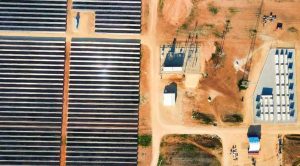Green bonds are an emerging class of debt promising investors steady returns without costing the Earth. Since the label appeared a few years ago enthusiasm from nuanced investors worldwide has ensured a warm reception. Next, frameworks and standards now being drafted should deliver credibility for the mainstream and globally connect many more investors to sustainable activities, including renewable energy.
 Globally, in 2014 investors snapped up US$36 billion of labelled green bonds, against US$11 billion in 2013, with the Climate Bonds Initiative (CBI), estimating the market could reach US$100 billion in 2015. Inclusion of unlabelled environmental bonds puts the current market at over $500 million estimates CBI. Indeed, if recent trends hold for labelled green bonds then the market could come 2017 top US$1 trillion.
Globally, in 2014 investors snapped up US$36 billion of labelled green bonds, against US$11 billion in 2013, with the Climate Bonds Initiative (CBI), estimating the market could reach US$100 billion in 2015. Inclusion of unlabelled environmental bonds puts the current market at over $500 million estimates CBI. Indeed, if recent trends hold for labelled green bonds then the market could come 2017 top US$1 trillion.
US and Europe have dominated issuance, though momentum is gathering in Australia too. The first green bond in Australian dollars, raising A$300 million, was issued by the World Bank in 2014 to finance climate change mitigation and adaptation. National Australian Bank (NAB) followed initially seeking to raise A$150 million through the bond issue, which subsequently doubled due to A$300 million, for a portfolio of 17 renewable-energy projects in late 2014. NAB went on to help arrange refinancing of the Hallett Hill 2 wind farm in March 2015 with a A$205 million green bond in the US private-placement market.
While the sums pale compared to the $100 trillion global bond market, the trends are promising. First, volumes have grown strongly over the last few years. Second, corporate issues are on the rise accounting for 33 percent of labelled green bonds in 2014 in a market that has hitherto been dominated by supranational institutions, such as the European Investment Bank and the International Finance Corporation. The trends are evidence of rising interest in environmentally-sound assets particularly among long-view investors such as insurers and pension funds.
Institutional interest in tapping renewable-energy assets is certainly rising. A survey in 2013 found over 30% of large institutional investors are planning to increase investment in renewable-energy assets. While some funds might be invested directly into acquiring projects, much will probably target bonds for governance and liquidity reasons. In particular, institutions wishing to divest from hydrocarbon stocks and bonds will be looking to trade into comparable renewable-energy securities. Another promising sign for the market are the green bond indices, including the S&P Green Bond Index, Barclays MSCI Green Bond Index and BofA Merrill Lynch Green Bond Index. They provide institutions with benchmarks for performance and support liquidity.
Some bonds however may be greener than others, which is not always clear because systematic and standardized disclosure and transparency are a work in progress. In principle, green bonds provide investors with an opportunity to fund projects with a substantially lighter environmental footprint than a conventional alternative. A sharper focus is offered by certified Climate Bonds which fund projects to mitigate greenhouse gas emissions or enable adaptation to climate change.
The range of projects financed by green bonds is surprisingly diverse, including among others green infrastructure, wind and solar power plants, railways and energy-efficiency upgrades with proposed green bonds set to fund ocean-acidification research and tidal energy generation.
However, while the wide range might offer something for everyone it also raises the risk that some may not be buying what they expected. Uniform disclosure and transparency are essential if investors are to be sure of the environmental performance of the underlying assets, which is even harder when they are a mixed bag, and avoid scandals that have dogged finance worldwide over the last decade. The credibility of investors, fund managers and the market is at stake for several reasons. One, ensuring that the environmental credentials, such as greenhouse gas emissions or water consumption, match claims fund managers make to their principals. Two, selecting assets based on relative performance within and between asset classes to maximize financial returns and environmental benefits. Three, a solid reputation will build confidence in the instrument thereby helping to efficiently allocate funds away from brown assets into green assets necessary to tackle climate change and develop a sustainable society.
A lack of transparency and uniformity is perhaps inevitable at this early stage. Nevertheless, despite the challenges there are two reasons to think green bonds have good prospects. One, a strong reception from investors to date with many issues oversubscribed, allowing issuers to raise more funds. Two, work is well underway to develop standards and frameworks as a basis for independent third-party verification.
Clear, coherent and credible standards for green bonds will enable more investors to confidently direct capital towards independently-verified issues that closely match their preference in terms of risk, return and ethics and help expand liquidity. That may be essential to maintaining recent trends in market growth. More so as corporate issues increase because the private sector in general is perceived, rightly or wrongly, to lag the social and environmental due diligence practises of public institutions.
Confidence-building frameworks are emerging from two sources which will both issue revisions in 2015. The Green Bonds Principles, observed by over 55 green-bond stakeholders globally, are a set of comprehensive voluntary guidelines managed by the International Capital Markets Association ICMA. Flexibility has been a key aim. However, it has implications for uniformity of transparency and disclosure leaving investors to do the hard work of figuring out the greenness of assets being financed, the transparency and level of disclosure being offered.
CBI is developing the Climate Bonds Standards (CBS), which is the first and for now only set of standards published for green bonds. Compliance criteria are set for the use of proceeds, eligible asset types, and management of proceeds and reporting. The compliance overhead for issuers is offset by support from CBI. The result is an independently-certified Climate Bond issued with a benchmarked level of transparency and disclosure.
Nevertheless, the value of standardization is debated in some quarters, although whether people are simply referring to a standard for “green” or also the transparency and disclosure aspects is often unclear. Proponents argue standardisation reduces risk while opponents fret about costs and reduced flexibility. Meanwhile the market is moving with some bonds fully subscribed in an hour. Moreover, in 2014, two-thirds of green bonds were accompanied by an independent second opinion.
Verification may not however end with a bond issue. As investors understanding of environmental performance deepens and regulation evolves periodic re-verification of the original green credentials over the life of some bonds may become commonplace. Green ratings similar to credit ratings may follow to assist institutional investors in structuring portfolios to match environmental mandates.
For renewable-energy projects verification of green bonds to recognized standards could be particularly important for three reasons. One, governance may prevent large investors directing funds into projects which are not independently verified to specific standards. Two, improving market liquidity will reassure investors. Three, the scale of renewable-energy investment required to tackle climate change is heading towards more than a trillion dollars a year globally, which could well exhaust other sources of funds.
Connecting renewable energy to the green bonds market might be a planetary-scale opportunity for investors, developers and sustainability. Turning that opportunity into reality in a clean way which reassures investors and avoids scandals through standardised approaches will lift the level of market transparency and ultimately provide more credibility to a market whose future depends on the integrity of its offering. Trends suggest that, at least for offering outside those of the development banks, that is what the market wants.
Elena Bašić is a consultant with DNV GL Renewables Advisory, advising the private sector and policymakers on renewable energy strategy and policy. Mark Robinson is Manager of Sustainability Services with DNV GL Business Assurance working with issuers and green bond framework developers globally.







